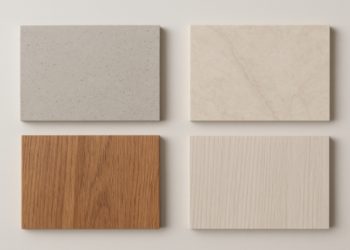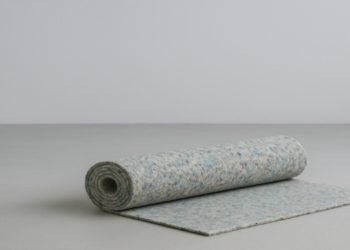When it comes to reflooring your kitchen, many people find themselves torn between the idea of using either lino or tiles. It can be a tricky decision and one in which you really need to weigh up the options and benefits of both.
So, to help you out, we’ve broken down the pros and cons of both to help you make that decision…
Tiles
Tiles have long been a staple in kitchen flooring, and for good reason too. The likes of natural stone tiles offer a classy touch to a kitchen, as well as a heap of benefits.
Durability
First and foremost, they’re highly durable and resistant to the likes of scratches, stains and water damage. They can last for decades and provide long term value for your investment.
Variety
You can get a huge variety of tiles these days from ceramic to porcelain, to natural stone and glass. This versatility can allow you to customise your kitchen and keep your flooring in line with your tastes and the styles of the rest of the kitchen.
Easy to Clean
Tiles are incredibly easy to clean and maintain, requiring only a regular sweep and the occasional mop to keep them looking fresh and pristine. Spillages and stains can be quickly removed, making them really practical, particularly in a busy family household.
Heat Resistance
Unlike some other flooring options, tiles are heat resistant, making them useful for kitchens where cooking appliances can generate high temperatures. They are also suitable for underfloor heating systems, providing additional warmth during the colder months.
The Drawbacks
Naturally, there are drawbacks too. During the winter they can feel cold and hard underfoot, while they also require more maintenance than lino, with grout lines requiring regular cleaning and maintenance to ensure they continue to look clean, attractive and healthy.
Tiles are also a more expensive option than the likes of lino, not only in the product itself, but also in the installment. But at the same time, they will last much longer.
Lino
Lino is a resilient floor material that has been a popular option with people over the past few decades. Often made from natural ingredients such as linseed oil, cork dust and wood flour, it offers a variety of benefits for a kitchen floor.
Comfortable Underfoot
Lino can be more comfortable underfoot as it’s a softer and more resilient material compared to tiles. This can be more beneficial for extended periods of time, so if you are a person who spends a lot of time standing in a kitchen, it could well be for you.
Warmth
Lino does retain heath and therefore makes the flooring warmer underfoot. However, around appliances that generate a lot of heat, it can also become a little too warm.
Affordability
Affordability is the big benefit of lino. It is much cheaper in both materials and installation, with it actually possible to install yourself if you’re a dab hand at DIY.
Easy Maintenance
It can also be easily maintained, with it only requiring a regular sweep and mop to keep it looking good. It’s a simple process in which you also don’t need to contend with grout lines.
The Drawbacks
There are more drawbacks to lino than there are tiles though. While it’s the cheaper option, it will not last as long as tiles. It is durable, but it can also be susceptible to damage, particularly from sharp objects, heavy furniture and pets. Scratches, dents and tears can appear over time, especially in high traffic areas of the kitchen.
It can also be damaged by moisture when exposed to it for prolonged periods of time, causing it to warm and discolour, while you may also find that the sun beaming down on it can fade the colouring over time too.
The decision on whether to decide upon tiles or lino often comes down to budget. There’s no doubt tiles are the studier and higher quality material and a much preferred option among households globally. However, if budget limits you, lino is a solid option that can last if you look after it efficiently.













































































